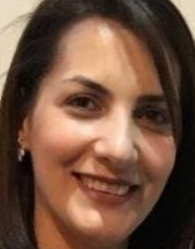Thomas Carey is co-Principal Catalyst for WINCan and Executive-in-Residence for the British Columbia Association of Institutes and Universities and the Monash University Faculty of Arts .
Anahita Baregheh is an Associate Professor at Nipissing University’s School of Business and WINCan’s Research Coordinator.
Blake Melnick is co-Principal Catalyst for WINCan and CEO and Chief Knowledge Officer for the Knowledge Management Institute of Canada
Our 2020 WINCan work in Ontario is focused on exploring three potential initiatives involving innovative collaborations with workplace and academic partners. These initiatives can build on the results and relationship from our previous WINCan work with Ontario workplace and academic partners. (You’ll see more of those 2019 results becoming available as adaptable learning resources in the next few months.)
Adapting recent research on sustaining innovation in mature organization to our Canadian context, including adaptations to sustain innovation for teaching and learning in higher ed
Collaborating with small and medium sized enterprises (SMEs) to mobilize research on developing Human-Centred Workplace Innovation within their workforce
Leading a Green Paper study on new across-the-curriculum learning outcomes in higher education to better prepare graduates for the Future of Work.
In this post, we describe the new initiative to explore how we could apply the recent research advances from the U.S. in understanding how to sustain strategic innovation in the workplace. In Part II of this series, we’ll describe the other potential new exploratory projects: one on mobilizing research advances in workplace innovation with SMEs in Ontario and one on incorporating Human-Centred Workplace Innovation as a cross-curricular graduate capability in new program developments in higher education.
Systematically Sustaining Strategic Innovation in Mature Corporate Organizations
All organizations face the challenge of sustaining workplace innovation over the long term. This is true regardless of the sector in which we operate – in the corporate, public, social/community, SME or education sectors. This can be a particular challenge as organizations mature, e.g., as a young startup moves past the founder-led stage or a young university which broke new ground settles into its own routines and loses its disruptive edge.
At one point, there was a shared perception that a decline in innovative activity was inevitable as organizations matured, and that well-established corporate giants or public sector agencies would always miss out on disruptive opportunities (a view clearly popularized by the late Clayton Christensen). However, more recently it has become evident that “even dinosaurs can disrupt”.
For example, in our partnership with IBM Canada last year it became clear that IBM’s evolution into a Design-Led company had re-energized their corporate ability to be on the cutting edge of innovation. A distinguished research group in the U.S. has studied such leading-edge corporations to capture insights about “how can mature [corporate] organizations systematically sustain strategic innovation”.
The resulting book, Beyond the Champion: Institutionalizing Innovation Through People, is the culmination of 25 years of research (and two previous books) which track three generations of innovation management: from cross-functional Innovation Labs - ‘radical innovation hubs’ is the researchers preferred term – through Chief Innovation Officers to an emerging view of Innovation as a corporate Function at the organizational level and a set of professional specializations at the employee level. This latest book’s subtitle captures this as Institutionalizing Innovation Through People.
We’d like to convene a group of Advisory Council partners and other leading organizations to assess how to share and apply these results, with a possible special emphasis on adaptation in the Canadian public sector. Anahita is bringing her perspective as a researcher in Management of Innovation. Blake brings his experiences as a corporate executive and his expertise as a catalyst for institutionalizing another organizational function, Knowledge Management, in both corporate and public sectors.
Systematically Sustaining Strategic Innovation…in Higher Ed Teaching and Learning
Our WINCan Vision encompasses Canadian workplace partners across sectors – Every Employee a Contributor to Innovation – along with a special emphasis on preparing Canada’s workforce for these innovation roles within the ‘workplace for learning’ in higher education – Every Graduate an Innovation Enabler. That requires that our higher education institutions can systematically sustain innovation within the teaching and learning environment.
Higher ed institutions world-wide are wrestling with this goal. For example, the University of Michigan has created an Office for Academic Innovation in which “more than 150 faculty, some 50 student fellows, and 45 full-time staff are activating and fostering new ideas for teaching and learning, using the entire University (and beyond) as its incubator”. UMich is also a leader in establishing the Harvesting Academic Innovation for Learners collaboration, for institutions committed to “ experimentation for transformational change as a response to the uncertainty in the broader education ecosystem”.
In Canada, individual institutions have set up innovation hubs and executive leadership to promote innovation in teaching and learning (e.g., University of British Columbia, University of Toronto and Concordia University). We believe the insights outlined above from the corporate sector can be adapted to inform our plans for systematically sustaining strategic innovation in higher ed teaching and learning.
Translating these insights for use in our higher education institutions will not be simple. As a first step, we are proposing a three-stage project over six months, Apr-Sept 2020:
Create a snapshot of research insights from the corporate and public sector, e.g., the division of professional specializations in innovation into Discovery, Incubation and Acceleration roles
Propose ways that higher education institutions could adapt these insights to maintain strategic innovation in our teaching and learning environments
·Develop three institutional case studies to test the initial applicability of these adaptations to “systematically sustaining strategic innovation in higher ed teaching and learning”. We will be exploring possible case studies with institutions in Ontario, Australia and the U.S.
Tom brings his perspectives as a researcher in Teaching and Learning Innovation and as a former university executive for Innovation in Teaching and Learning – who wishes these insights had been available to him in that role! Anahita will be bringing her research expertise in Managing Innovation.
Interested? If you want to contribute to the design, prototyping or initial implementation activities, feel free to contact Blake, Anahita or Tom directly.
Click here to See Part II of this series.
Image credits:
www.shutterstock.com/g/chevanon; https://www.pexels.com/photo/close-up-of-woman-holding-coffee-cup-at-cafe-312420/
Danielle Griscti (CC BY-SA 2.0) https://www.flickr.com/photos/daniellesimone/14039718059






